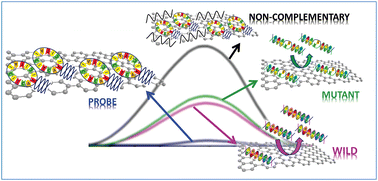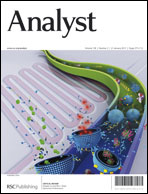There is an emerging interest in developing electrochemical DNA biosensors which rely on label-free protocols for the detection of DNA hybridization and polymorphism. Lately, many of them have been using DNA probes which were physically adsorbed onto different graphene platforms. In these works, the biorecognition event is monitored by electrochemical impedance spectroscopy and the detection mechanism proposed needs verification by orthogonal methods. Here, we aim to provide an insight into the mechanism behind the impedimetric signal change upon the hybridization event on graphene platforms. For this aim, we used an orthogonal electrochemical method, differential pulse voltammetry, to examine the oxidation of guanine on target DNA molecules hybridized with an inosine-substituted hairpin DNA probe. We show that the successful biorecognition event leads to desorption of dsDNA from graphenic surfaces on a wide range of graphenic surfaces, such as graphene oxide, electrochemically reduced graphene oxide and thermally reduced graphene oxide. These results confirm the previous hypothesis based on electrochemical impedance spectroscopy data. In addition, these findings also have a profound impact on the understanding of both the interactions between DNA and graphene platforms and the DNA recognition event on graphene platforms for the construction of biosensors.

You have access to this article
 Please wait while we load your content...
Something went wrong. Try again?
Please wait while we load your content...
Something went wrong. Try again?


 Please wait while we load your content...
Please wait while we load your content...